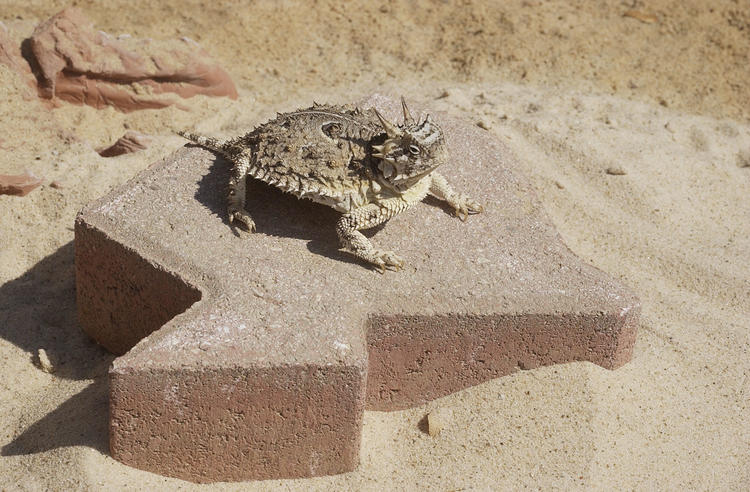You see it at games, on bumper stickers and t-shirts and in family photos. It’s the TCU Horned Frog.
The first horned frog appearance was on the cover of the first AddRan yearbook in 1897. By 1915, the mascot made its way onto the first TCU seal. In 1979, the mascot was renamed from Addy the All-American Frog to Super Frog.
Addison Clark Jr., one of the founders of the TCU athletic program, suited up in a costume to play rough and tumble with the students. Clark was influential in the selection of the name “Horned Frog,” recognizing the useful little lizard as a typical reptile of the Southwest and was common on the Waco campus. The Horned Frog, actually a lizard, has been the university mascot longer than TCU has been the university’s name.
The scientific name for this Texas reptile is phrynosoma cornutum; in Greek, phrynos means “a toad” and soma means “body”; in Latin, cornutus means “horned.” Their primary diet is red harvester ants; they like to eat 80 to 100 a day. Unfortunately, red ants are falling victim to insecticides and to more aggressive fire ants in much of Texas.
Horned Frogs, typically three to five inches long, are cold-blooded animals. They have an unusual pineal gland, resembling a “third eye” on the top of the head, which zoologists believe is part of their system of thermoregulation, the ability of an organism to keep its body temperature within certain boundaries.
When angered or frightened the horned frog can squirt a fine, four-foot stream of blood from its eyes. The horned frog was named the State Reptile of Texas in 1992.
In stories of Native Americans in the Southwest, horned frogs are depicted as ancient, powerful and respected. Archaeologists find horned frogs on petroglyphs, pottery and other crafts painted hundreds of years before Columbus set sail for America. In some parts of Mexico, folklore persists that these creatures that weep tears of blood are sacred.
In California, Texas and other states, horned lizards are deemed threatened and given state protection, although none are on the federal endangered species list. The Texas horned lizard has declined in about 30 percent of its habitat, though there is some indication it may be making a comeback. The decline is usually blamed on development and destruction of their habitat, which is in the arid regions of West Texas and the rest of the Southwest, the spread of non-native South American ants that compete and war with the harvester ant and the overuse of pesticides, which kill harvester ants.
This is our beloved horned frog, the creature we cheer and whose name we share. Know him, love him and yell for all to hear “Go Horned Frogs!”

